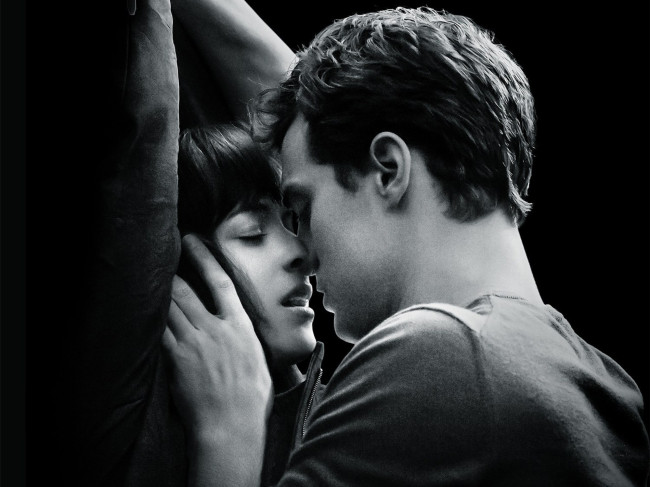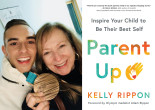NEPA NERDS: ‘Fifty Shades’ of abuse – the gray area of Christian Grey’s behavior

Like many men who are writing about “Fifty Shades of Grey,” either the book or the movie adaptation that was released this past weekend, I have not experienced this phenomenon personally – I’m simply an observer attempting to make sense of something popular that I have no connection to or interest in whatsoever. Why write about it then? Why comment on something that was clearly not meant for me as a geeky straight male? Because, as a fan who is deeply immersed in my own kind of fandom, I truly want to understand other types as well. Judging by its 100 million print copies sold and over $80 million haul at the box office this weekend, if it’s breaking records, it must have some pretty passionate followers behind it.
It also has its origins in a very specific type of fandom – fan fiction. Author E. L. James created the original story as “Twilight” fan fiction, and based on the reviews from average readers and critics alike, the book it later became didn’t evolve much from there. But its purpose certainly wasn’t to win a Nobel Prize in Literature – it was to entertain and titillate with the sex scenes it was built around, and it obviously succeeded in that respect, at least with its target audience. Therefore, who was I to judge or criticize?
In fact, I thought it was great that it was stirring things up and getting both sexes to talk more openly about sex and their sexuality. Guys complained that Christian Grey was this unattainable fantasy man, condemning women everywhere for falling in love with the stereotypically fit, attractive, young billionaire businessman instead of average Joe Good-Guy, but how often do guys expect women to accept similarly impossible standards in fictional female characters? Just about every day in movies, television shows, comic books, video games, and so much more. “Let them have their stupid fantasy guy,” I thought. “By next week, we’ll all be talking about the coolest new heroine in restrictive skintight leather murdering bad guys while still looking sexy in slow motion and no one will see the hypocrisy.”
Then I noticed the movie reviews coming in over the last week, and a few headlines mentioning “abuse” caught my eye. I had read that those who practice BDSM in everyday life were not pleased with its portrayal in the book or the film, but I heard it was all tame, not abusive. As it turned out, it wasn’t the sex that was the issue:
In 2013, social scientist Amy E. Bonomi published a study wherein the books were read by multiple professionals and assessed for characteristics of intimate partner violence, or IPV, using the CDC’s standards for emotional abuse and sexual violence. The study found that nearly every interaction between Ana and Christian was emotionally abusive in nature, including stalking, intimidation, and isolation. The study group also observed pervasive sexual violence within the CDC’s definition, including Christian’s use of alcohol to circumvent Ana’s ability to consent, and that Ana exhibits classic signs of an abused woman, including constant perceived threat, stressful managing, and altered identity.
Needless to say, I could no longer dismiss Mr. Grey as a harmless fantasy. “Twilight” had already done enough damage portraying an abusive relationship as normal, acceptable, and even desirable to young women, and now its adult clone is doing the same. Like an obsessed vampire stalking his younger, virginal prey, Christian tracks Anastasia’s movements through her phone, controls where she goes and who she sees, isolates her from family and friends, and changes everything about her, from her diet to her personality. She fears displeasing him to the point where even her sexual consent can be questioned in several scenes, leaving him at the end of the story and yet returning in the sequels hoping things will change or somehow become better. Of all the dumb romance novels that could have blown up so big, why did it have to be this one?
I did not pay much attention to who was cast in the film until after I discovered this, and of all people, I think it’s very appropriate that the role went to Jamie Dornan. I recently finished watching the BBC Two series “The Fall” on Netflix, where he stars as a serial killer named Paul Spector, and the characters are strikingly similar. Spector isn’t a billionaire businessman, but he is good-looking, charming, manipulative, and sadistically abusive. He wears many faces and demands control of all the women in his life, following and toying with them as he uses his sexual prowess as a weapon and a way to divert suspicion away from his killings. He’s a disgusting excuse for a human being, and yet, particularly in the final cliffhanger episode of the second season, one character questions if even Superintendent Stella Gibson, the strong feminist detective played by Gillian Anderson who has been tracking him down the entire time, is attracted to him. She is disgusted by the notion and says that she despises him with every fiber of her being.
Women across the world should loathe Christian Grey for the very same reasons, and yet we’re all supposed to dismiss “Fifty Shades of Grey” as good, dirty fun – a night out with the girls rather than a cautionary tale to keep in mind before your next date. I have to wonder if the producers, casting director, or whoever decided to cast Dornan based their decision on his incredible performance in “The Fall.” Did they observe the very same similarities between Grey and Spector? Did they stare deeply into the piercing blue eyes of evil and think, “Yep, he’s basically already played this psycho?” What does that say about America’s S&M “hero?”
At the end of the day, it’s all entertainment, so we’re just supposed to treat it as a fleeting distraction rather than a deeper reflection of who we are – our fears or desires, our love or our hatred. The popularity of “Fifty Shades” and “Twilight” and their staunch defenders is evidence of a deeper problem in our culture – we accept physical and emotional abuse every single day, and we consistently make excuses for it, masking it and protecting it from criticism. It seems fans are doing that right now, so I hope, as other fandoms have done, that they take a much closer look at what they’re defending before dismissing these concerns.
Religious groups who have been shaming women into not seeing “Fifty Shades” in theaters are so focused on the sex that we all naturally think about anyway that they miss the bigger issue here – one in four women endure domestic violence at some point in their lives, and none of them deserve it. Those looking for their own Christian Grey will likely find themselves in a controlling, dysfunctional relationship like this, so we should be discussing how and why rather than hiding these problems behind closed doors, which is all forced guilt will do. I may be a lifelong Marvel Comics fan, but I’ll be the first one to point out if they do something sexist, racist, or just plain ridiculous. Fans should address these issues openly and regularly so that changes are made and our entertainment reflects the best, not the worst, of us.
“Fifty Shades” may just be “mommy porn” to some, but let’s demand more from our smut. The reality may never be quite as good as the fantasy, but the difference really shouldn’t be so jarring.
by Rich Howells
Rich is an award-winning journalist, longtime blogger, photographer, and podcast host. He is the founder and editor of NEPA Scene.



